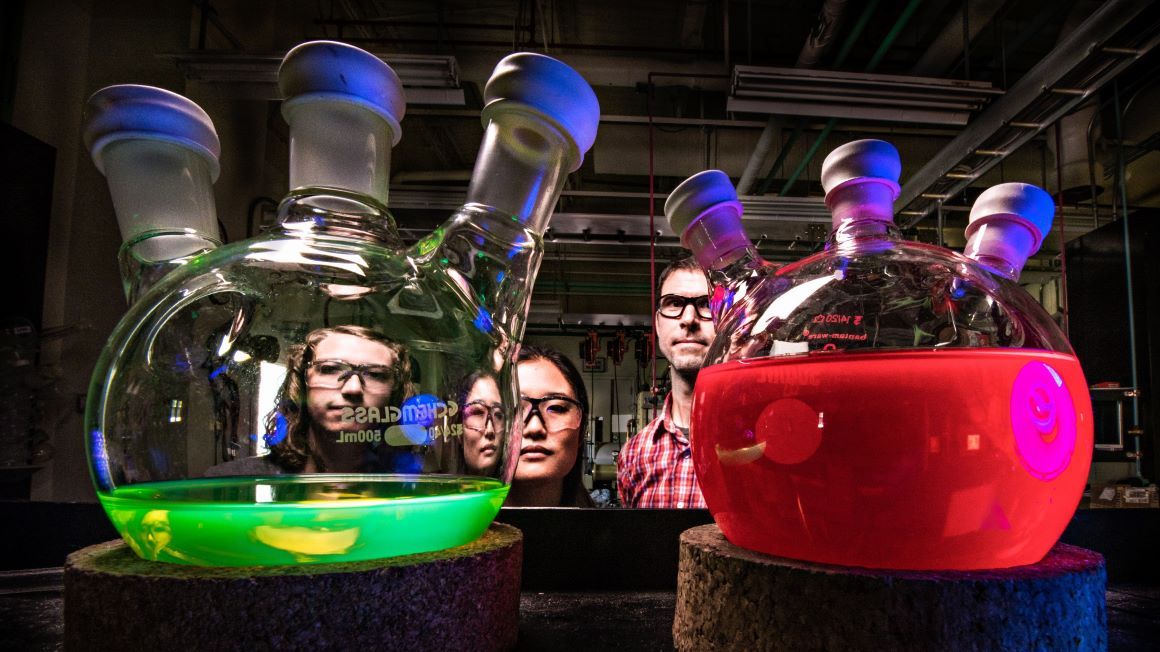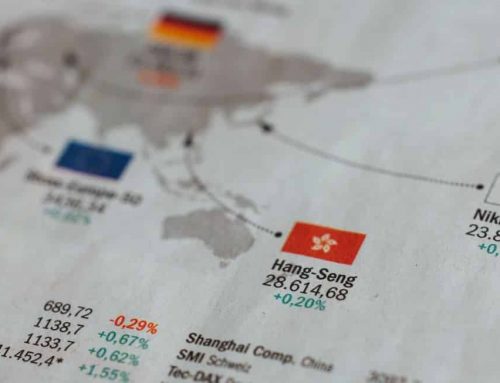Soylent Green is PEOPLE !!!!!
According to Guardian columnist George Monbiot, food fermented in labs will kill off agriculture and the meat industry within 15 years and we’ll be living on carbon-neutral vegan goop in a reimagined Garden of Eden:
All in all Monbiot is rather excited about the fermentation of a yellow bacterial slurry which he saw made into ‘flour’ using a process with an efficiency “20,000 times greater” than photosynthesis.
Let that sink in for a moment: apparently we’ve a improved process that’s evolved over 2.5 billion years by a factor of 20,000. Crikey.
His description reminded me of the 70s film, Soylent Green. It’s set in 2022 (spooky!) in a society where global warming has destroyed food production (spookier!) and everyone lives on fermented foods of dubiuos origin: Soylent Red, Soylent Yellow and Soylent Green. No spoilers – but if you’ve not seen this (almost) 50 year-old sci-fi classic give this a click – ’70s trailers were almost as long as the film so you’ll get the idea:
Science, Innit.
Monbiot has an odd relationship with science; he’ll happily stick with the scientific consensus when writing about climate change but not when making utterly wrong-footed attacks on genetically-modified organisms (GMOs). He’ll follow the science wherever it leads him, provided it’s down the path of confirmation bias. One can’t help but think he uses the data as a drunk uses a lamp post – for support rather than illumination.
In this piece he cites studies that support his rather dramatic position that right now “food production is ripping the living world apart”. I’m not saying agriculture doesn’t have its impacts, I just don’t share Monbiot’s apocalyptic interpretation of the facts. I shall return to this.
But the GMO angle is interesting here; he’s never let settled science or inconvenient facts get in the way of his anti-GMO biases – but now he’s basked in the creamy light of Soylent Yellow it seems he’s had a change of heart. Perhaps no one has told him the proprietary strains of bacteria doing the heavy lifting in the fermentation process are all genetically modified. It could be that his philosophical antipathy to agriculture has led him to see GMOs as the lesser of two evils. Who knows?
Anyway, according to Monbiot’s piece sacrificing 12,000 years of farming on the altar of Soylent Yellow is our sole hope of salvation; it’s 20,000 times more efficient than agriculture, we could produce protein at one-tenth the cost of animal protein and this switch to ‘farm-free’ foods would bring about “the near-complete collapse of the livestock industry” by 2035. Really?
There is a pattern here: he’s no mere shill for Big Vegan, his disdain for agriculture is a matter of record and it’s long been his position that we need to ‘re-wild‘ nature:
It’s all a bit like ‘paleo’ diets; a hankering to return to an idealised version of the Stone Age that never existed. In this case the vision is some sort of Marxist Garden of Eden, but one where the National Lottery consists of whether you’re eaten by the lynx and wolves (that he says would flourish) before or after you die of starvation.
I suspect Soylent Yellow provides a means for Monbiot to square the circle in terms of food production, thus enabling us to banish pastoralism, aquaculture and agriculture in order to ‘re-wild‘ the country while snorting Soylent Yellow in our faux-hair shirts. I can’t wait.
The Numbers
Energy
The numbers are from the supplier which he credulously reproduces without challenge or apparent scrutiny. Top journalism. But the 20,000x claim is a land efficiency factor – but only takes into account the footprint of the fermentation plant. If you factor in the vast arrays of panels you’d need to convert the solar energy this could theoretically be a bit more efficient than photosynthesis, depending on what you’re growing. This is the estimate made by the company making the stuff who reckon you might get an order of magnitude. Or you might not.
It all just has that distinct and characteristic whiff of marketing bollocks from a company raising investment.
Also the brave new world Monbiot describes uses renewable energy to produce the hydrogen to make the Soylent Yellow.
But renewable energy is scarce and using it to produce hydrogen would be woefully inefficient. Yes, agriculture does have an environmental cost that you’d get back by getting rid of it – but I’m not convinced the books will balance when we start shutting down farms to build Soylent Yellow factories.
Also there’s talk of using hydrogen for absolutely bloody everything in the future but pretty much all of it is still made from fossil fuels. So on a practical, energetic level I’m not convinced either – and that’s without factoring in all the other inputs you’d need to make the panels etc etc to do a proper soup-to-nuts calculation.
Nutrition
In terms of nutrition Soylent Yellow would be lacking. The manufacturers say it has some mineral content but about the vitamins, trace elements and other nutrients we’d need?
A challenge here is Monbiot’s understanding of nutrition is on a par with his understanding of GMOs: in Apocalypse Cow (his Channel 4 puff piece for Big Vegan he’s plugging) he blames:
“saturated fats from animals for causing cancer and obesity”
Errrr…. no. That’s carbs. Keep up with the literature, FFS.
Also in terms of nutrition apparently this stuff is roughly 50% protein, 20% carbs and 10% fat. Even if there’s a bit of flex in that my fag packet says that’s about 5kcal or so per gram. So let’s say you need about 2,000 – 2,500 kcal per day to keep body and soul together.
That equates to a pound or so of Soylent Yellow powder per person per day. Ick.
Conclusion
Energetically, environmentally and nutritionally these claims are wildly optimistic. The approach is incredibly simpistic and reeks of motivated reasoning. The idea that we can replace UK farming – worth £120bn to the economy and employing 4 million people – with zero-carbon fermented vegen goop in 15 years is just Utter, Utter Bollocks (µ²β) on every level imaginable.
Even if this process works efficiently at scale (and that’s a big stretch) we’re still a long way off that age-old science fiction dream – being able to magic food “literally out of thin air” as this process is described by the manufacturer.
Also there’s also no guarantee Soylent Yellow will even be licenced for sale; the EU’s stance on GMOs is as ill-informed and science-free as Monbiot’s.
Even if we ignore the EU’s (imaginary) GMO issue, it took Rank Hovis McDougall a decade to get past safety concerns to get Quorn, another SCP approved. And that was 25+ years ago.
Has Quorn precipitated a mass movement away from burgers? No. The market for meat-free food is growing, granted, but the demand just isn’t there for Big Vegan to take over. Which is handy because the supply side estimates and timescales are, well, bollocks.
Also it’s worth examining Monbiot’s premise that we’re facing an imminent global food catastrophe too: the catalogue of similar predictions of food running out going back decades have all been proved false. Why? Good science and improvements in agriculture – which gets ever more efficient while lessening its impact on the globe.
The fact is we do produce enough food now to feed the world, it’s just us bastards in the developed world wasting a third of it (and yes, I know that’s a massive oversimplification). According to the UN, two decades of economic growth and increased agricultural productivity means the number of people in the world who aren’t getting enough to eat has dropped by almost a half against a background of the global population rising by nearly two billion.
This is not the impression given by Monbiot’s article because – like GMOs – the facts do not fit Monbiot’s worldview.
I’m not saying all is perfect, far from it and yes, there is a place – and need – for fermentation products such as this, insect proteins like cricket ‘flour’ and other, novel food sources. There’s real progress as well with GMOs tweaked to make photosynthesis more efficient which are already increasing yields by 50%.
[Side note – yes, photosynthesis has been fine-tuned over 2.5 billion years but has picked up a couple of errors along the way. These are being gene-edited out of crops to increase yields – and that means they sequester more CO2 as well. How cool is that?]
So all in all pesky facts, data and basic science don’t really support Monbiot’s (or Big Vegan’s) rather optimistic position on this. All in all, it seems there is a large bottle somewhere in the Guardian office marked ‘Tincture of Total Bollocks‘ and Monbiot has been drinking deeply.
But it’s more than that.
For me, viewing nutrition in terms of just calories and macronutrients to be manufactured for ingestion is an impoverished and soulless ideology. It doesn’t take into account that we’ve been farming for over 12,000 years and we’re quite good at it. Is it perfect? No.
But seeking its demise in pursuit of some fantasy Extinction Rebellion Marxist Utopia living on fermented goop denies agriculture’s place as part of human culture, or that growing, harvesting, preparing, cooking, eating and enjoying food is not just an intrinsic part of human civilisation and society, it’s what makes – and what has made us – what we are. Literally. Cooking unlocked the calories we needed to develop these big brains we need to think about this shit.
Even if the notion that we could go “farm free” in the long term were feasible (and Monbiot’s roadmap to this ill-founded dystopia certainly isn’t) I’m not convinced this is a kind of ‘culture’ anyone else really aspires to.
But I could be wrong. Would you swap ‘proper’ food (whether plant-based, fishie-wishies or yummy, cute animals) for goop? Let me know…





What George Monbiot doesn’t know about biotechnology is…. the whole of biotechnology. I read the Guardian (this is your fault!) and what he describes is (at best) pilot plant, maybe even lab scale (I’m a (retired) industrial chemist – I know about these things) and in a few years it’s going to have replaced agriculture? Can’t think of the right words, so I’ll keep it as simple as possible, and just say No.
I was trying to adopt the position of maximum charity (really fucking difficult for me) and avoid very satisfying and funny ad homs – but given I studied biotech that automatically makes me a shill for Monsanto. I’m a really shit shill, tho, they’ve never paid me a penny…
To make me even more evil, much of my career was involved with synthesis and supply of chemicals used for flavours (sorry, “flavouring substances” to use the legal term, which is so much nicer and doesn’t use the c-word) and to a lesser extent fragrances. I used to say I personally carried out animal tests and dropped our products into rabbit’s eyeballs – it was easier than trying to explain what I actually did.
We’ve mostly been eating shit for years …aka fast food 😣
We’ve all been eating shit …aka fast food for years 😣